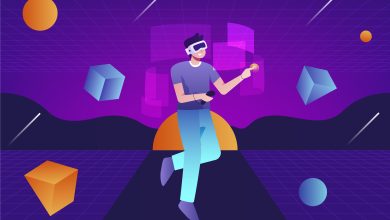How does machine learning work?

Introduction
Machine learning is rapidly becoming a crucial part of our lives. From driverless cars to automated customer service bots, machine learning has empowered businesses with the ability to use data and technology more efficiently than ever before. But what exactly is machine learning? How does it work? And what can it do? In simple terms, machine learning is an artificial intelligence (AI) sub-field that enables computers to learn from data, identify patterns, and make predictions without any explicit programming. This allows machines to form their own conclusions without any explicit instructions.
Overview of Machine Learning and its Benefits
Instead, machines can be trained using a variety of algorithms and supervised or unsupervised techniques on a dataset. Once trained, machines are able to take this knowledge and apply it in new contexts. Analytics Path Machine Learning Training in Hyderabad is the perfect platform to propel your career towards the next level. The ML work process begins with defining the problem or goal you are trying to achieve using ML algorithms. Next, you need to collect adequate data that will be used for trained the algorithm and build models that best fit those data points.
Finally, the models are teste by deploying them on various datasets and observe how well they perform against previously collected metrics. Although there are various types of ML algorithms available today, most can be broadly classified into three categories – supervised learning, unsupervised learning, and reinforcement learning – which fundamentally differ in the way they learn from data.
Supervised learning involves training a machine using label datasets where the output is known before; whereas in unsupervised learning, there is no pre-define output as such but an algorithm learns by identifying patterns in an unlabeled dataset. Similarly in reinforcement learning, machines learn by processing environment feedbacks or rewards/punishments based on their actions taken within a given environment or situation.
It allows us to develop better predictions which can enable us to optimize existing processes or develop entirely new applications altogether. With so many advantages at hand we should not ignore this emerging technology as it promises immense potentials that could revolutionize almost every sector ranging from healthcare to finance. Analytics Path Machine Learning Training in Hyderabad is the perfect platform to propel your career towards the next level.
How Machine Learning Works An Overview of ML Algorithms and Processes
The use of machine learning (ML) to automate tasks is becoming increasingly popular in a wide range of businesses. To understand how ML works and what it can do, we must first examine the work process and algorithms used. Machine learning uses algorithms to detect patterns in data that humans cannot, enabling more accurate and faster decisions than manual processes.
What is an ML Algorithm?
An ML algorithm is a set of instructions that allow the program to learn from its input – data. It enables the computer to discover information from existing data, recognize patterns, and make predictions about future data without being explicitly program for each situation. The article Omspan must have given you a clear idea of this concept of Machine Learning (ML) The algorithm works by finding correlations between different pieces of input data so that it can make predictions based on past experiences or observations.
Types of ML Algorithms
There are several types of machine learning algorithms available; some commonly used ones include supervised learning, unsupervised learning, reinforcement learning, and deep learning. Supervised learning uses labeled training data to detect patterns in incoming information and then use those labels for future predictions. Unsupervised learning helps identify clusters within datasets by using inputs that don’t have any labels attached to them.
ML Work Process
The machine learning work process consists of three main stages: data collection, modeling/training, and deployment/testing. First, data is collect from various sources which can include images, videos, text documents or other digital formats such as websites or social media platforms. The model is trained until it reach an acceptable level of accuracy before being deployed into production where it can be use for real-world applications such as image recognition or fraud detection systems.
Conclusion
The article Omspan must have given you a clear idea of this concept of Machine Learning (ML) has revolutionized our ability to automate tasks with unprecedented accuracy and speed by utilizing powerful algorithms to detect patterns in vast amounts of data that would take humans far longer to find manually. Understanding how ML works – including its work process and algorithms – gives us greater insight into its capabilities as well as its potential applications both now and in the future.



